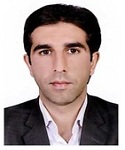| Biography | |
|---|---|
 Dr. Farhang Aliyari Faculty of Mining Engineering, Urmia University of Technology, Iran |
|
| Title: Gold metallogeny of Tethyan orogenic belts in Iran: from Mesozoic magmatic arcs to Cenozoic back-arc and postcollisional settings | |
| Abstract: Different types of gold deposits including the epithermal, orogenic, Carlin-type, gold-rich VMS, porphyry Cu ± Mo ± Au, Cu ± Au skarn, and placer deposits have been discovered in Iran. The formation and distribution of these deposit types is temporally and spatially associated with protracted compressional tectonic environments during subduction and closure of the Neotethyan oceanic crust in the Mesozoic to Cenozoic. Main types of gold deposits were formed during three successive stages. 1) gold-rich volcanic-hosted massive sulfide (VMS) and sedimentary exhalative (SEDEX) deposits (e.g., Barika) in the Sanandaj-Sirjan zone contemporaneous with the generation and incipient subduction of Neotethys Ocean from Triassic to Upper Cretaceous, 2) Paleocene to late Eocene orogenic and intrusion-related gold deposits (e.g., Qolqoleh, Muteh, Zartorosht) in the Sanandaj-Sirjan zone associated with diachronous collision, related arc magmatism, and accretion between the Afro-Arabia plate and Iranian microcontinents, and 3) porphyry Cu ± Mo ± Au (e.g., Sungun, Kahang, Dalli, Meiduk, Sar Cheshmeh) and related epithermal Au deposits (Sharaf Abad, Sari Gunay, Chah Zard) formed during the Miocene oblique and asymmetric collisional to postcollisional magmatism in the Urumieh-Dokhtar Magmatic Arc. Despite widespread development of Mesozoic magmatic rocks associated with subduction of the Neotethys Ocean in the Sanandaj-Sirjan zone, porphyry or epithermal deposits have not been discovered to date. Two separated metallogenesis that are related to the accretionary orogeny and continental collision significantly controlled by shearing, thrusting, regional scale strike-slip faulting, breaking-off and delamination of subducted slab processes. Carlin-type, Orogenic, Au-rich VMS and SEDEX deposits are highly favorable for exploration in the uplifted areas associated with Low-angle detachment faults, shear zones, and folds in the Sanandaj-Sirjan zone. Postsubduction porphyry Cu ± Mo ± Au, Cu ± Au skarn, and epithermal systems are highly prospective particularly for blind deposits in the Eocene to Pliocene igneous rocks of the Urumieh-Dokhtar Magmatic Arc and Lut Block. | |
| Biography: Farhang Aliyari is Assistant Professor at the Urmia University of Technology, Urmia (Iran). He received a B.Sc. (2003) from Urmia University, Urmia, Iran, M.Sc. from (2006) from Tarbiat Modares University, Tehran, Iran, and a Ph.D. (2011) from Tarbiat Modares University, Tehran, Iran. Research fields include mineralogy, fluid inclusions, stable isotopes, geochemistry, geochronology, and metallogeny. Published over 40 research papers, International and national Conferences. Recipient of Economic Geology Award, European Association of Geochemistry, IGCP Research Award, Thomson Reuters High Cited Researcher and Hot paper 2014. He supervised over 50 BSc Honours, MSc and PhD students and also currently Consultant to the mineral exploration industry and brokers and investors in Iran with exploration properties in throughout Iran. He worked as a senior research geologist in the Pars Olang Company for a 5 years for investigation and exploration of porphyry C-Mo-Au deposits in Iran. | |
